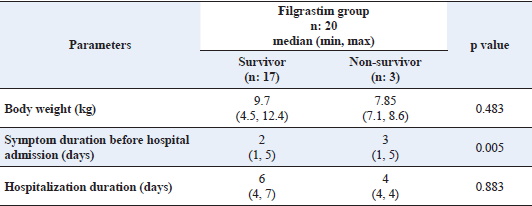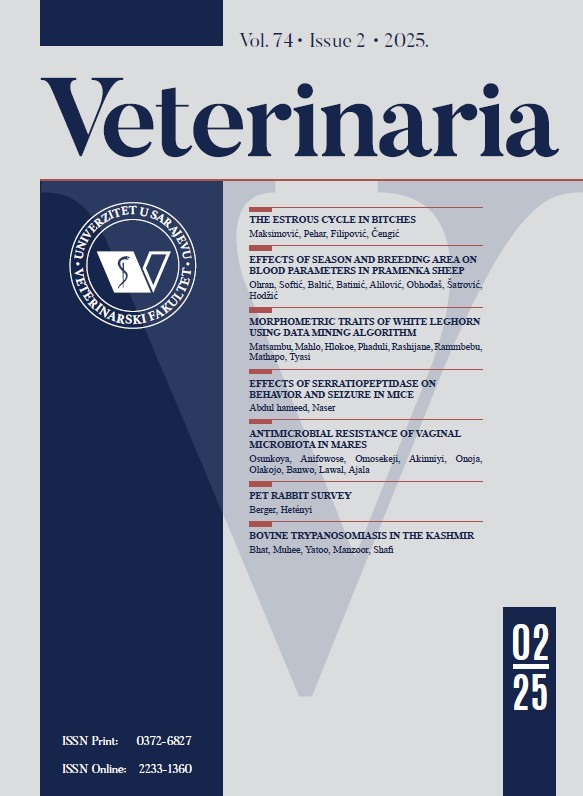The use of hG-CSF in canine parvoviral enteritis: Its effect of clinical and laboratory variables
Keywords:
Blood Cell Count, dog, prognosis, treatmentAbstract
Canine parvovirus is one of the most important pathogenic viruses, and canine parvoviral enteritis (CPE) is a highly contagious and often fatal disease of canines. The presence of neutropenia has been considered a hallmark of CPE since it is a negative prognostic indicator. Granulocyte colony stimulating factors (G-CSF) are essential molecules that control blood cell differentiation, proliferation and survival. Thus, the aim of this study is to investigate the efficacy of filgrastim, a human G-CSF, on clinical and laboratory variables compared to the standard treatment regimen of CPE. Of the 40 dogs with CPE, each treatment group within study had 20 dogs randomly assigned. In addition to standard treatment protocols, dogs in the Filgrastim group received hG-CSF subcutaneously once a day at a dose of 10 μg/kg for 3 days. Physical and laboratory examinations were performed at study admission and for 3 days during the hospitalization period. The most prominent finding was a higher granulocyte count of the Filgrastim group on the 1st and 3rd days than that of the Standard group (p=0.024 and p=0.05, respectively). Although the use of hG-CSF at the first admission prevents the decrease in the granulocyte count and positively affects the prognosis, it should be kept in mind that the severity of clinical and laboratory findings at the first admission and at the initiation of the treatment is important in determining the prognosis and clinical outcome of CPE. As a result, it was concluded that the use of hG-CSF may have therapeutic significance in cases of CPE.

Downloads
Published
How to Cite
Issue
Section
License
Copyright (c) 2023 Erdem Gülersoy, Canberk Balıkçı, Esma Kısmet, Adem Şahan, İsmail Günal

This work is licensed under a Creative Commons Attribution 4.0 International License.







